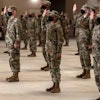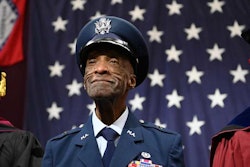From application delays to concerns about inadequate benefits, the new Post 9/11 G.I. Bill is posing challenges to recent military veterans who want to return to school.
Billed in many quarters as the greatest investment in veterans’ education since World War II, the new law is facing some speed bumps in its early implementation. With delays in processing payments to colleges, the federal government instead sent checks directly to some veterans in late September. However, not all banks honored these largely handwritten checks, adding another obstacle to those already hard-pressed to pay their tuition bills.
These developments have put added pressure on the Department of Veterans Affairs (VA) to improve implementation of the law that took effect Aug. 1.
“The VA is taking, on average, 35 days to process a G.I. Bill claim,” said Patrick Campbell, chief legislative counsel for the Iraq and Afghanistan Veterans of America (IAVA). In a statement distributed via YouTube, he said, “We know this is too long.”
Up to 300,000 veterans have applied for educational aid under the 2008 law, which covers tuition, fees, books and, in many cases, living expenses for those with military service after Sept. 11, 2001. Benefits are tiered based on the number of days on active duty, and individuals with at least three years’ service may claim the highest benefit. However, the law also is designed to help members of National Guard and Reserve units called up for active duty.
While payments are to go directly to colleges, veterans who enrolled this fall found that many bills are still unpaid. “It’s starting very slowly,” Mark Kantrowitz, publisher of the research center finaid.org told Diverse.
Financial support also varies greatly by location. That’s because benefits are determined by state and linked to the highest in-state tuition at a public college or university. Critics say this policy works against those who attend colleges in low-tuition states.
One of the most dramatic examples is in Washington, D.C., which lacks a comprehensive state college system. The largest public institution, the University of the District of Columbia, is a low-cost institution, even though the district also is home to some of the nation’s most expensive private institutions.
As a result, the VA bases the D.C. benefit on a cost of $197 per credit hour. In neighboring Maryland, the benefit is linked to a much higher cost: $458 per hour.
“The formula in certain states is creating a problem,” Kantrowitz said.
The gap is evident in other regions as well. In Texas, the benefit is based on a rate of $1,471 per credit hour, while for neighboring Oklahoma the per-hour rate is just $151.
The Iraq and Afghanistan Veterans of America has called the benefit system “unwieldy” and wants changes. Instead of a state-by-state limit, it argues, the program should set a national cap on benefits.
Nationwide, the most expensive public institution charges about $13,000 in tuition annually, the group states.
Meanwhile, the VA says veterans now can apply for benefits online at www.va.gov. The agency said it currently is processing about 25,000 applications. The Iraq-Afghanistan veterans’ organization also has a web site with information and a benefits calculator at www.newgibill.org.





















